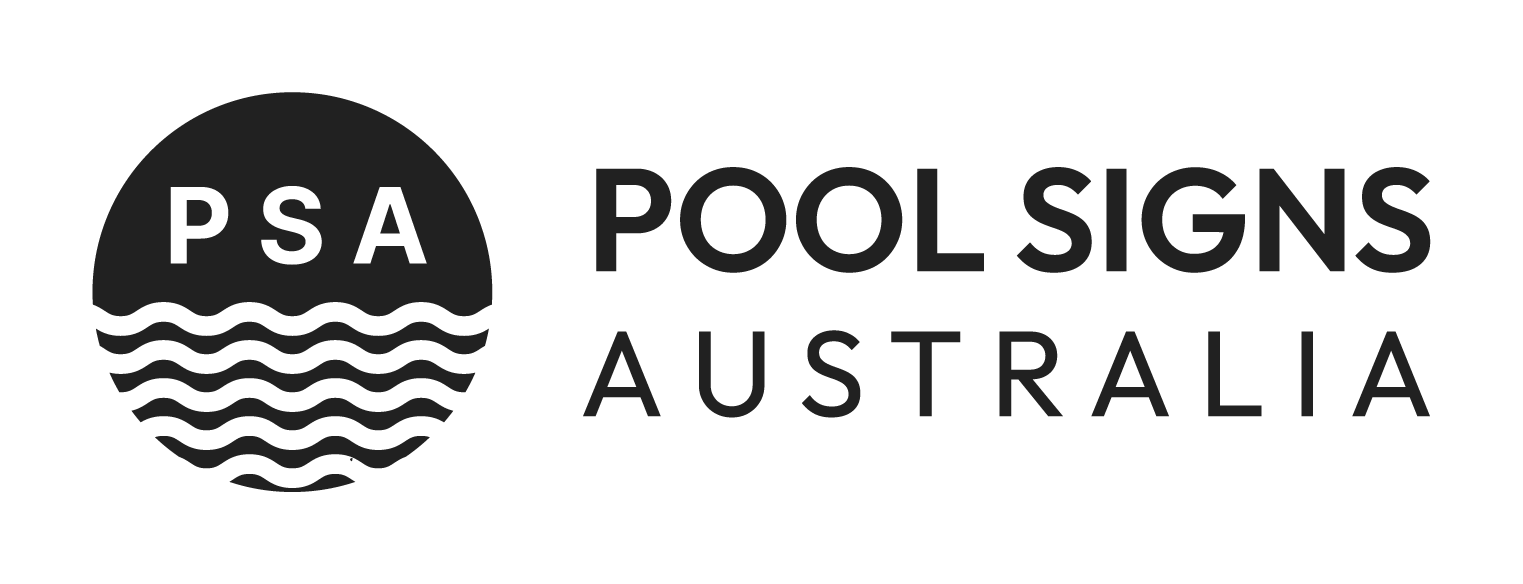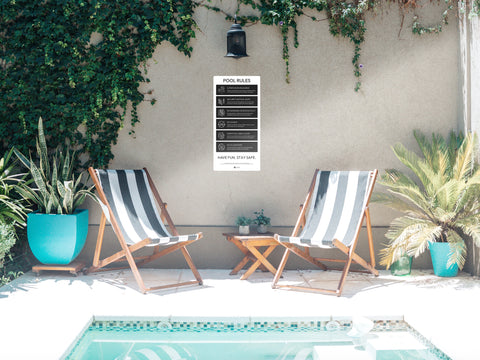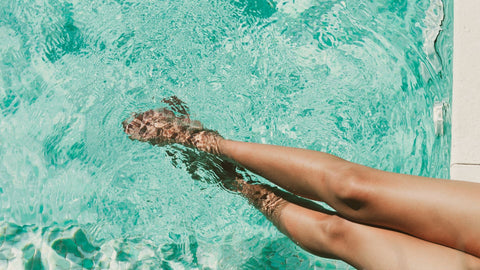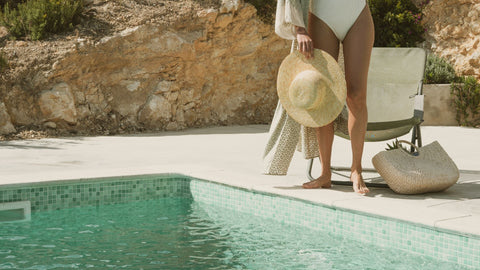Owning a pool in Australia is a great way to enjoy the outdoors, but with that enjoyment comes responsibility. Ensuring that all swimmers—especially children—are safe is paramount, and one of the simplest yet most effective ways to enforce safety is by displaying a clear, visible pool rules sign.
A properly displayed pool rules sign serves multiple purposes: it prevents accidents, ensures compliance with Australian safety standards, and provides clear emergency instructions. Let’s take a closer look at the key rules on a beautifully designed pool sign and why each one matters.
Breaking Down the Essential Pool Rules
1. Supervision Required
"Children must be actively supervised by an adult at all times in or around the pool. Never leave children unattended."
Why it's important:
Drowning is one of the leading causes of accidental deaths among young children in Australia. Even experienced swimmers can get into trouble in the water, and supervision is crucial in preventing tragedies. Ensuring that an adult is always watching provides an extra layer of safety, allowing for quick intervention if needed.
2. Secure the Pool Gate
"Always close and latch the pool gate. Do not prop it open, and ensure it remains compliant with safety regulations."
Why it's important:
Australia has strict laws regarding pool fencing and gates to prevent unsupervised access by young children. A propped-open gate is a serious hazard, as it removes a crucial barrier to the water. By keeping the pool gate securely closed, you reduce the risk of unsupervised access and potential accidents.
3. No Running or Rough Play
"Running, pushing, or rough play around the pool area is prohibited to prevent slips, trips, falls, and injuries."
Why it's important:
Poolside areas are often wet and slippery, increasing the risk of falls. Running, pushing, or roughhousing near the water can lead to serious injuries, including head trauma or broken bones. This rule is in place to ensure a fun but safe environment for all swimmers.
4. No Diving
"Diving is not allowed in this pool. Shallow water can cause serious head, neck, or spinal injuries."
Why it's important:
Diving into a pool that isn’t designed for it can be life-threatening. Shallow water increases the risk of head, neck, and spinal injuries, which can lead to permanent disability. By clearly stating that diving is not allowed, this rule helps prevent devastating accidents.
5. Keep Pool Area Clear
"Remove toys, flotation devices, and other objects from the pool area when not in use to reduce the risk of accidents."
Why it's important:
Leaving toys, flotation devices, or clutter around the pool can create tripping hazards. Additionally, young children may be tempted to reach for floating toys and accidentally fall into the water. Keeping the pool area clear ensures a safer and more organised swimming space.
6. No Glassware
"To keep the pool area safe for everyone, glass bottles, glasses, and glass containers are not allowed."
Why it's important:
A broken glass bottle near the pool is a serious hazard. If glass shatters in or around the water, it becomes nearly impossible to see, increasing the risk of severe cuts and injuries. This rule helps keep the pool area safe and enjoyable for everyone.
Why Pool Rules Signs Matter
By clearly displaying these rules, pool owners:
- Reduce the risk of accidents and injuries
- Ensure compliance with Australian pool safety laws
- Create a safer and more enjoyable swimming experience
Having a pool sign is more than just a formality—it’s a crucial safety measure.
Get a Pool Rules Sign That Blends Safety with Style
If you’re looking for a high-quality, durable, and aesthetically pleasing pool rules sign, check out our beautiful collection of pool signs. Designed to withstand Australian weather while enhancing your pool area’s look, these signs are a must-have for any responsible pool owner.




